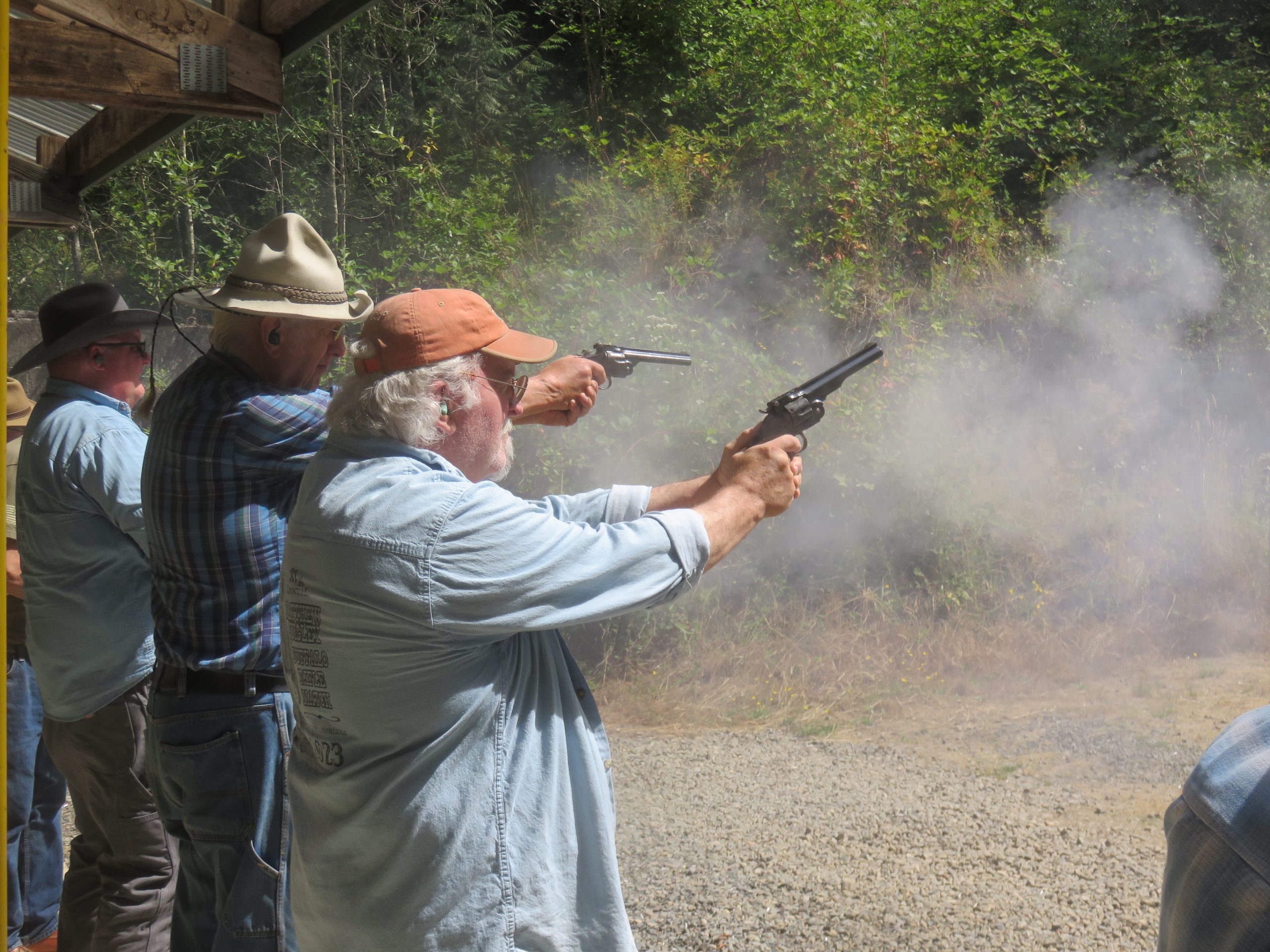
By Mike Nesbitt | Contributing Editor
All Old West Centerfire Matches, held at Capitol City Rifle & Pistol Club, which I’ve told you about before, are the same.
Those matches are shot at the same targets, which are posted at the same distances, and the course of fire, being just ten shots at each target, remains the same. So, how could one match be different from the others? Very easily because no shooting match is quite the same even if it is repeated over and over. Our most recent Old West Centerfires Match was very different and let me tell you about it.
But first, just in case you haven’t read about one of these matches before, I’ll tell you some things in general about our Old West Centerfire Matches. These are informal shooting matches for black powder cartridge rifles and, because they are shot at 100 and 200 yards, they fall into the “short range” category. Being short range takes nothing away from them, the competition is still very strong.
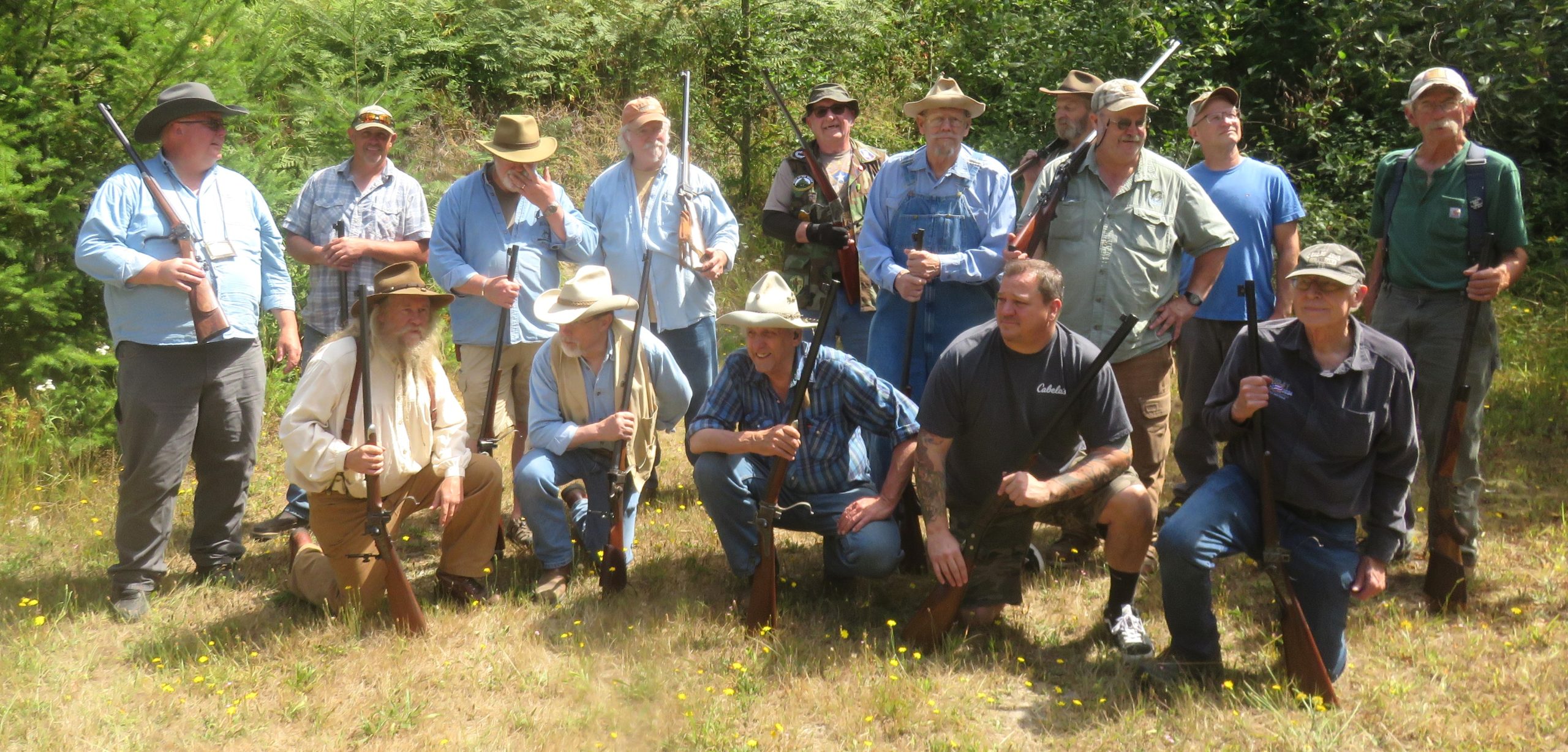
Our course of fire includes just ten shots at 100 yards, followed by another ten shots at a 200-yard target. I’ve mentioned the targets and distances in that order only for simplicity, the shooters usually have their choice in selecting which target to shoot at first. I say “usually” because sometimes in rainy weather we might post only one target at a time so that the targets won’t get severely soaked during the shooting relay.
And our standard shooting relay is timed to just 30 minutes. That’s a full half of an hour for the shooters to fire their twenty shots, shooting at both distances. The 30-minute time limit had never bothered me before but this time it did and that’s one of the things which made this Old West Centerfires Match different for me.
This was a good match, still speaking in rather general terms. We had 17 shooters, which is a good turnout. On top of that, the weather was very good. The day would get warm, perhaps quicky, but when we started the match at 9:30 in the morning, the temperature was very pleasant and there was a light cloud cover which gave us excellent shooting light. So, this match got off to a very good start.
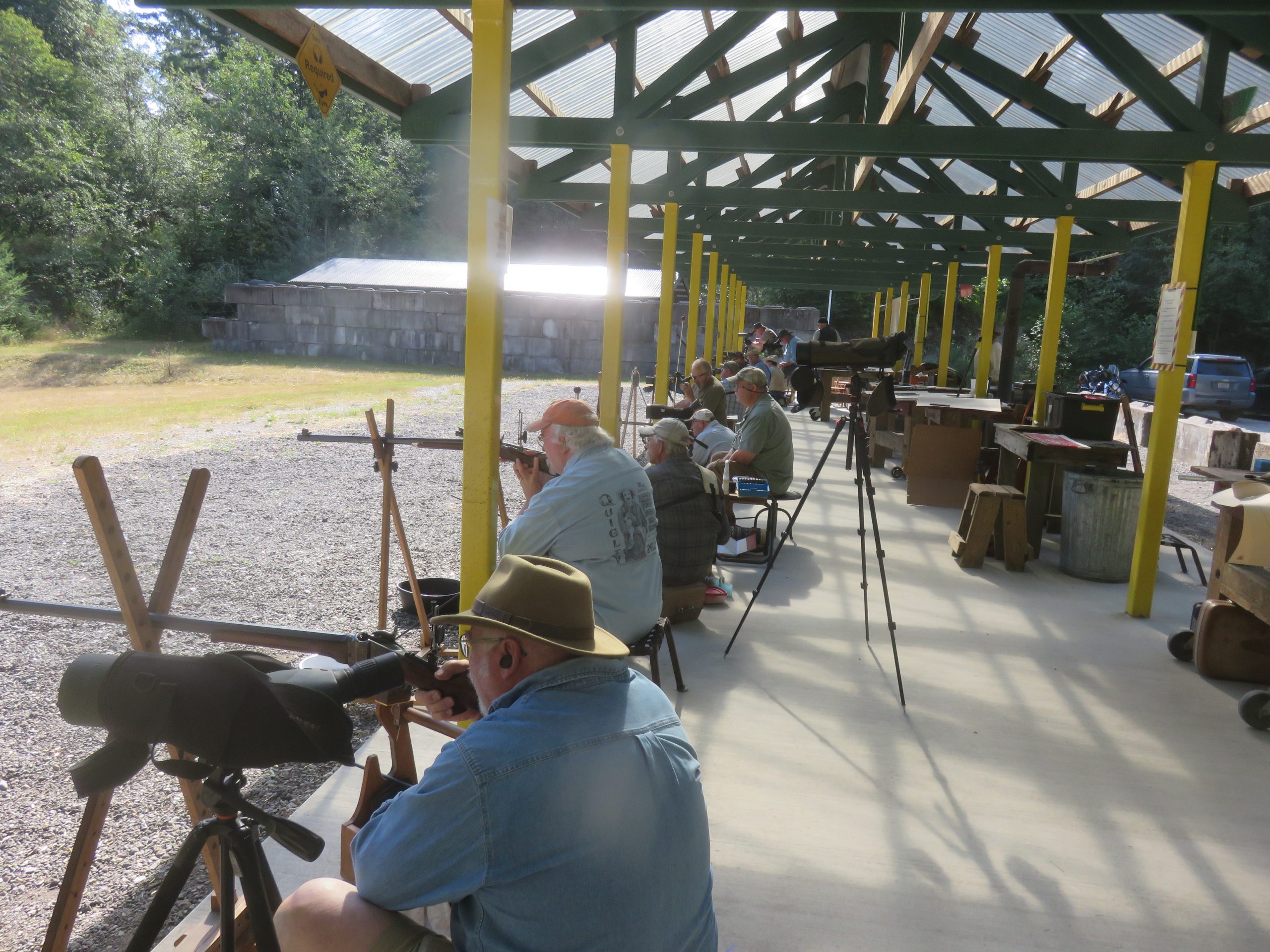
The firing line for relay 1, Allen Cunniff in the foreground.
We score these matches quite simply; each target is scored and the sum of the scores for each shooter’s two targets decide the winners for the day. And we have six Old West Centerfires Matches per year. The scores from five of those matches are added up for each of the shooters and that total becomes their score for the annual aggregate, which is awarded separately in November, when our final OWC match is held for the year. Some excellent prizes are awarded for the annual aggregate score, well worth shooting for.
Two of our shooters could not be there for this particular event. For people who want to maintain their standing in the annual aggregate, we do allow targets to be shot in advance. They were Mike Moran and Mike Holeman, both of whom were attending a muzzleloading rendezvous which was being held at the same time. They both used Sharps rifles in .45-70-caliber and they shot their targets early, with witnesses, and then paid their entry fees when they shot their targets. Those early targets were kept and not actually scored until the scorekeepers were scoring the other targets for this same match. In general, shooting early offers no particular advantage and it is mainly done in consideration of the aggregate score.
While we do shoot six of the Old West Centerfires Matches per year, we only count the top five of each shooters’ scores for the annual aggregate. That allows those shooters who have shot in each of the year’s matches to throw out their low score. It also allows a shooter to miss a match during the year and not be out of the running for the aggregate awards.
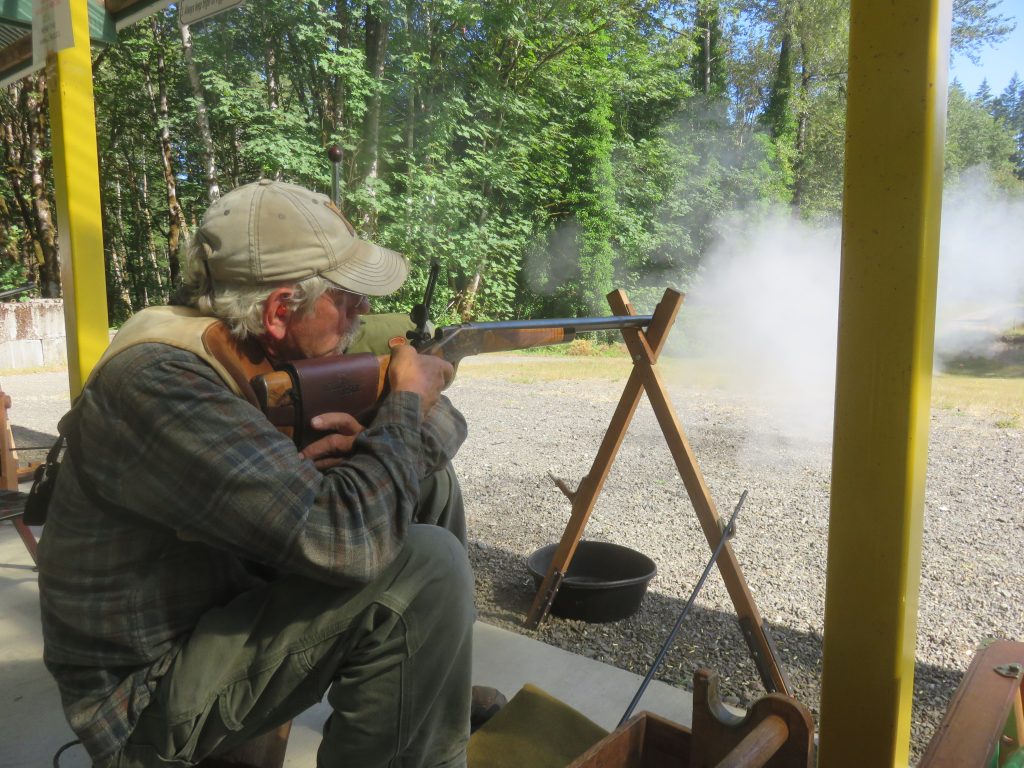
That’s the general rundown for our Old West Centerfires Matches. I’ll point out that, because of the annual aggregate, all of the targets used during the year are always the same in size and the distance they are fired at. We wouldn’t want any match to be “easier” than another which might make the aggregate un-even. All shooters get the same chances.
So, if all of the Old West Centerfire Matches are the same, how could one be different? We could say that no two shooting matches are completely alike and that’s because of the human element, as well as the weather, and this match was certainly different. Different from the norm.
Right on time, rangemaster Tom Witt called first relay to the firing line. My partner, Jerry Mayo was shooting next to Ken Kurfurst and I was spotting the shots for Jerry but also keeping an eye on Ken’s target. Ken’s partner, Curt Lokovsek, was doing the actual spotting for Ken, I was just watching, and that was something to watch.
Ken was shooting his rebuilt Sharps Borchardt rifle in .45-90 caliber, using heavy bullets with rather heavy powder charges. And with that heavy rifle, Ken set a new range record for our Old West Centerfire Matches with a score at 100 yards of 100-5X. A picture of Ken’s target is included for all to see. Watching Ken shoot that target was certainly impressive!
Previously the record high score was shared by Ken Kurfurst and Allen Cunniff, they had both shot scores of 100-4X which was very hard to beat. Perhaps those scores should not be shown together because Allen’s 100-4X was shot at 200 yards with his .45-70 Sharps while Ken’s was at the smaller target at 100 yards. Either way, that’s grand shooting and now it will be even harder to beat Ken’s new record. Ken and Allen will certainly be the first to try…
My partner Jerry had shot his targe down at 100 yards so when the relay had ended, Jerry and I went downrange to re-post his target. Then an “alibi relay” was called, our first one of those, so Jerry could complete his shots on that target. His alibi shooting was done fairly quickly, with his .45-70 using paper patched bullets, and then all targets from relay number 1 were brought in while the targets for relay number 2 were being posted.
Then it was my turn to take a sitting position to do my shooting, along with the others in the second relay. Jerry was spotting for me and Ken was also going to give me encouragement along with possible recommendations. I was using my .50-70, the rifle I call “Moonbeam,” with loads using the 450-grain bullets over 65 grains of Olde Eynsford 2F and primed with large pistol primers. My first shot was just a fouling shot, fired over the target but into the berm, then I used the blow-tube to moisten the black powder fouling which made me ready to go for score.
I was taking my shots slow and carefully, or at least I was trying to. My score was adding up, each shot contributing, although I’d end many points away from Ken’s score. And Ken would give me suggestions now and then but I must admit, I had a lot of trouble hearing him. As already mentioned, these relays are timed, with a 30-minute limit. I’ve never ran out of time before but for this match, I was trying to be more careful than speedy.
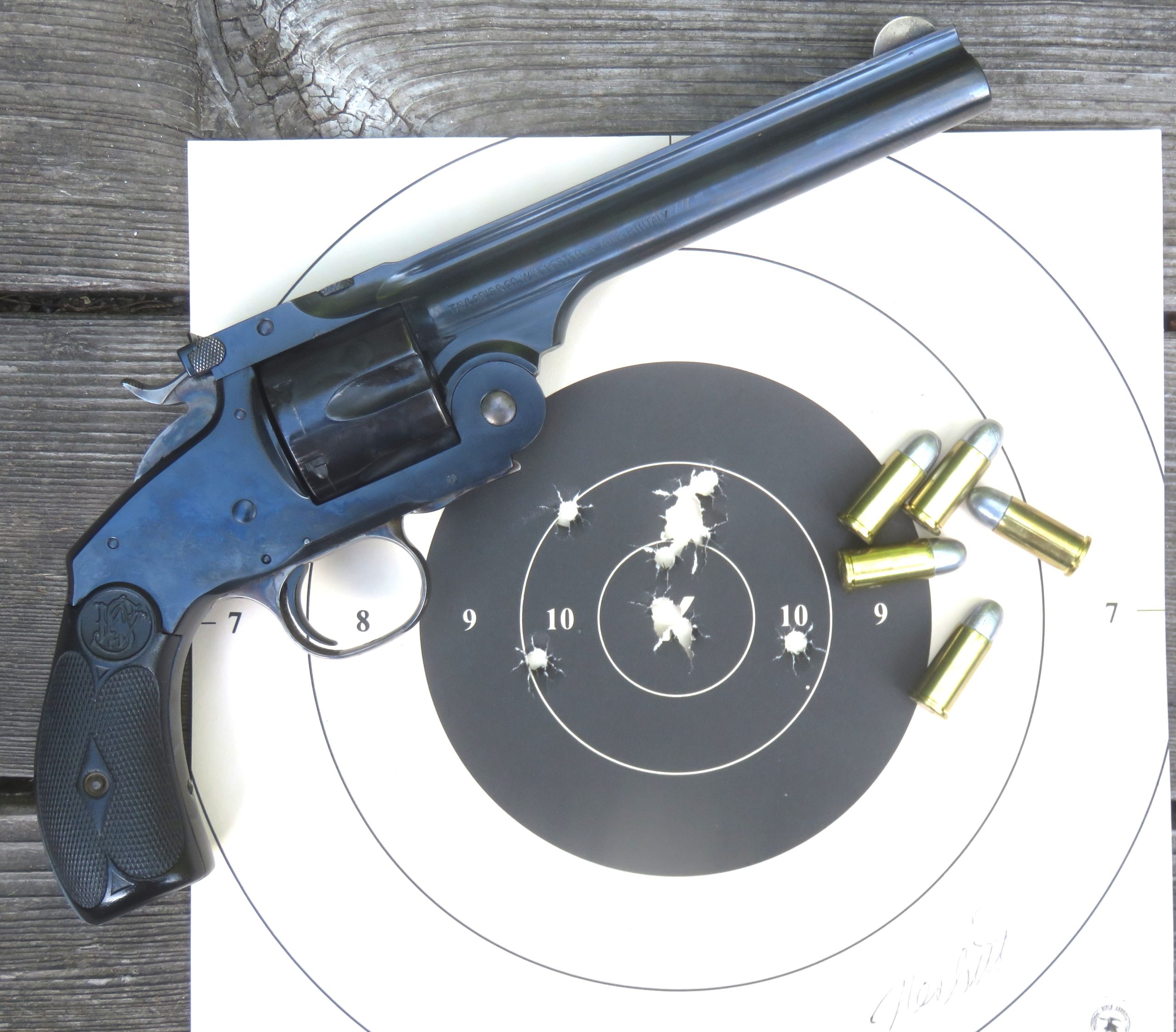
My 100-yard target was completed. So, after adjusting the Mid-Range Deluxe tang sight for elevation, to reach the 200-yard target, my shooting continued. Hits were being made in the black on that target and I was carefully using the blow-tube between shots but not wiping the barrel as some shooters do. With my slow rhythm, I had just taken my 4th shot at the 200-yard target which left me with six shots to go. That’s when Ken hollered, loud enough for me to hear,
“Two minutes left!”
Wow!! Six shots to go and only two minutes left. I had to hurry. And that’s just what I did. The blow-tube was not used, I’d just chamber each round, aim carefully, and quicky fire. That was done just about as quickly as it takes to describe it. But I got all six shots off before hearing the rangemaster call “Cease Fire!”
Then I looked down the firing line and watched the other shooters in this same relay continue shooting for at least another twelve minutes. That made me ask Ken why he had told me there were only two minutes left for the relay. Ken shook his head and said, “No, I was suggesting that you should adjust your windage two minutes to the left…” Oh, now I get it…
My “rapid fire shooting” at the 200-yard target actually wasn’t as bad as it might sound. All shots scored, although a windage adjustment might have helped. Those ten shots at 200 yards scored 76 points. Add that to the 79-X I had at 100 yards gave me a score of 155-X for the day. That wasn’t as good as I had hoped for but I have certainly done worse too.
But our shooting was not quite done. At our matches we hold a secondary event which takes place after the shooting for the aggregate, and we call it the “after-match.” This time our after-match was shot with black powder cartridge revolvers and I used my favorite Uberti copy of a Smith & Wesson New Model #3 in .44 Special, firing loads in .44 Russian cases. Not all of the shooters took part in the after-match and it does cost one more dollar added to the pot to enter. For a prize, the winner takes the pot.
Our revolver matches are usually fired at just ten yards, at a single bullseye target, with ten shots. My pistol shooting was better for me than my rifle shooting. A couple of the other shooters had good scores in the high nineties but I was the only “pistolero” to get a score of 100, what might be a 100-5X. There was such a jumble of shots hitting right at 12 o’clock that it’s hard to see how many bullets actually cut the X-ring. It is easier to count the five shots that didn’t cut the X-ring… That gave me 1st place with the revolver, taking the $10 pot.
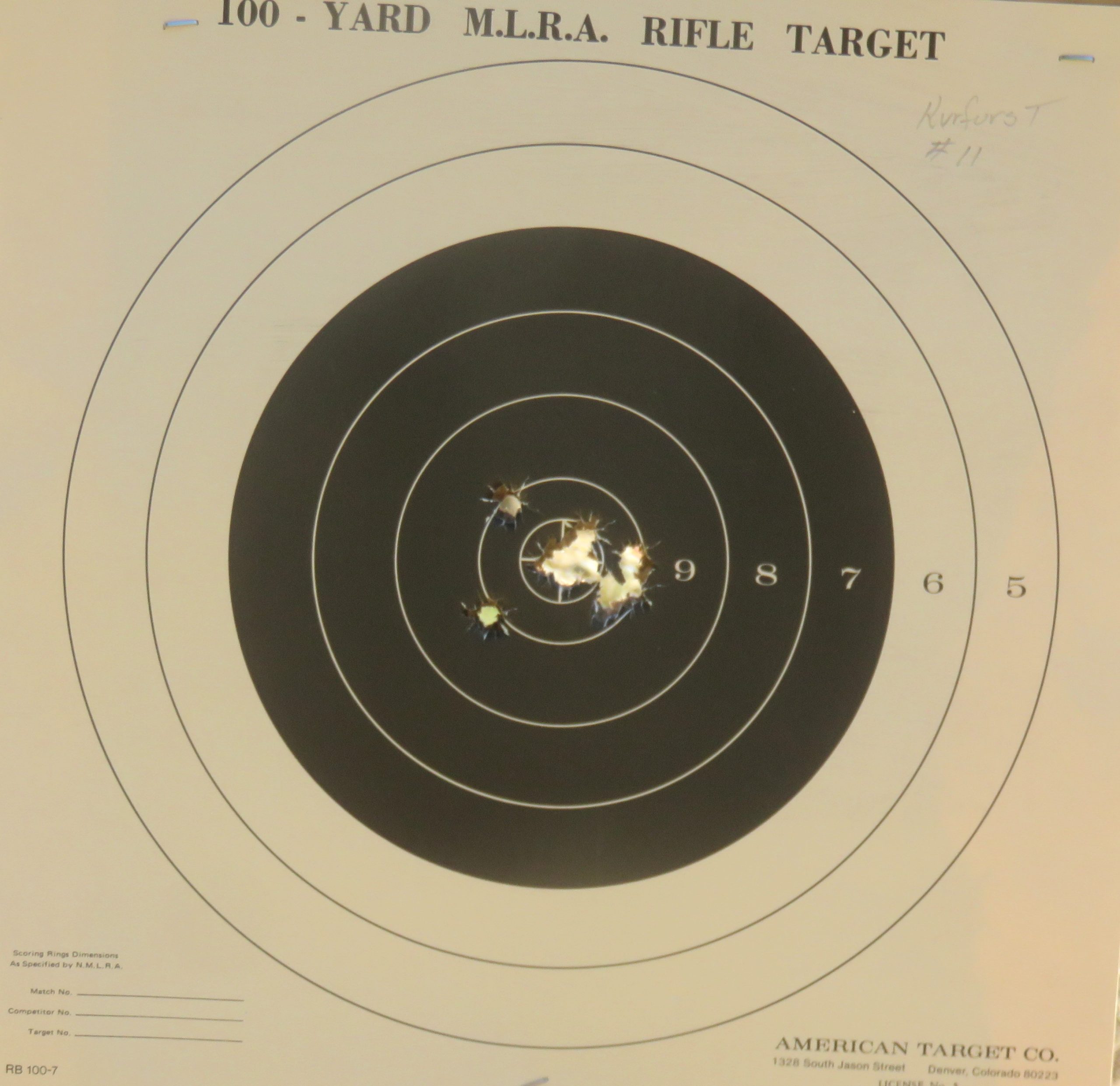
Rifle scores were then read and the prizes were awarded. Ken Kurfurst placed 1st (that should be no surprise) with a score of 197-8X. Dick Elliott was 2nd with 195-8X. In 3rd place, with the highest score at 200 yards (98-X), was Allen Cunniff with 181-2X. Me? I was down at 13th place with my score of 155-X, and I was shooter number 13 so maybe next time I should sign-in earlier to get higher on the list… For my prize, I picked a yellow bandana.
That is not a complete rundown on this different Old West Centerfires Match but I think you can see why it was a different match for me. “Two minutes left!” I’ll remember that… And I’ll also remember watching Ken Kurfurst shooting his record-breaking target. That was well worth watching.



